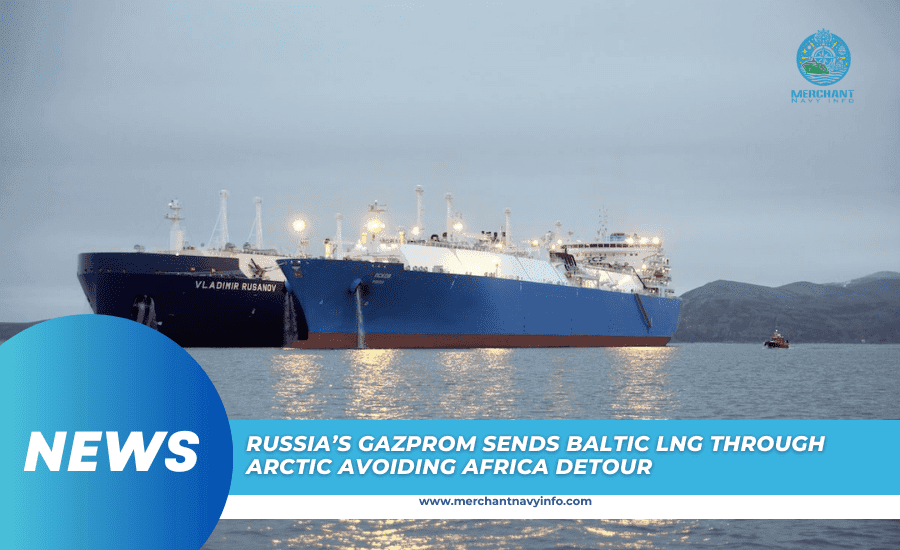
Gazprom To Send Lng From Baltic Region Via Arctic To Avoid Diversion To Africa
Arctic routes continue to grow as an alternative to existing trade routes. Russian gas giant Gazprom is the latest company this summer to skip the Suez Canal or reroute to Africa, instead sending a vessel to use the Northern Sea Route as a shortcut to Asia.
The LNG carrier Pskov left Gazprom’s gas liquefaction plant near St. Petersburg in the Baltic Sea on September 3 and entered Northern Sea Route waters north of Novaya Zemlya on September 10. The small Portovaya LNG plant opened in September 2022 with an annual capacity of 1.5 million tons.
In 2018 and 2019, Pskov visited Arctic waters to transport cargoes from Novatek’s Yamal LNG plant and completed a ship-to-ship transfer of Russian LNG in Norwegian waters. The 300-meter-long vessel can transport 170,471 cubic meters of LNG.
With its Ice-2 ice class, the vessel can sail unassisted through light sea ice conditions and through moderate one-year ice with icebreaker escort. Russia’s Northern Sea Route is currently almost ice-free, but there is floating ice in the eastern part, and nuclear icebreakers, including Chinese container ships, continue to provide assistance.
Pskov Route 2024

The Pskov Route is an LNG route from China to Potovia via South Africa and currently returns via the Arctic. (Source: Cipatlas)
More than 20 commercial vessels are currently active on this route, including about 12 LNG tankers, several Aframax and Suezmax tankers, and three container ships. The summer boating season will last until October, when shorter days indicate sea ice will return.
The Pskov Arctic Route is expected to go to China and is expected to last about 4 weeks, with a total voyage of 8,500 nautical miles, which is 50% less than the traditional route. A similar journey from the Baltic Sea to China via the Suez Canal or around Africa would be 12,500 or 16,000 nautical miles, respectively.
Due to continued unrest in the Red Sea, only very few ships have passed through the Suez Canal this year, with the global fleet almost entirely rerouted around the southern tip of Africa.
Supercooled gas now flows through the Arctic from multiple sources, including exports from the Yamal LNG and Arctic LNG 2 projects and complete transfers from Europe to Asia, such as Pskov.









